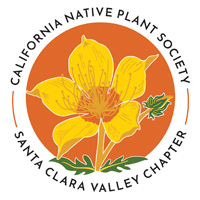By Carol Mattsson, Chapter Newsletter Editor
On September 15, 2013 I joined several other Chapter members in a field trip to visit Sharsmith Herbarium at San Jose State University. The trip was led by Curator Toni Corelli and Assistant Curators Teri Barry and Lars Rosengreen.
The herbarium is named for botanist Carl Sharsmith, who started the herbarium and collected and mounted over 15,000 specimens. We started our tour in the room with the many rows of cabinets holding the herbarium sheets.
SPECIMEN SHEETS
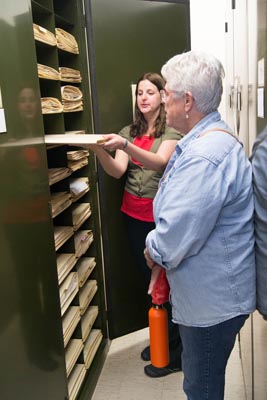 The curators had taken out several specimen sheets for us to examine
The curators had taken out several specimen sheets for us to examine 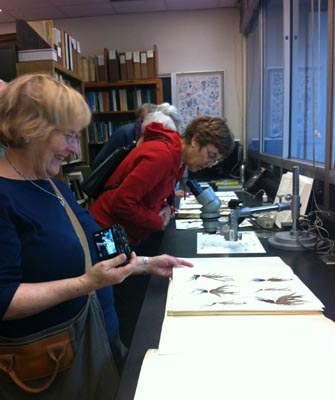 . We learned that the most damage to the specimens is from insects. Thus the first step for a dried, pressed plant specimen to become part of the herbarium collection is to freeze it for a week at -20 degrees F. When we examine the specimen we are to keep the sheet specimen-side up, and not roll or bend it in any way. After we examine the specimen we put the sheet in a special case designated for a refreeze before being restored to its permanent cabinet.
. We learned that the most damage to the specimens is from insects. Thus the first step for a dried, pressed plant specimen to become part of the herbarium collection is to freeze it for a week at -20 degrees F. When we examine the specimen we are to keep the sheet specimen-side up, and not roll or bend it in any way. After we examine the specimen we put the sheet in a special case designated for a refreeze before being restored to its permanent cabinet.
I like ferns so I enjoyed a good look at a specimen of Dryopteris arguta. 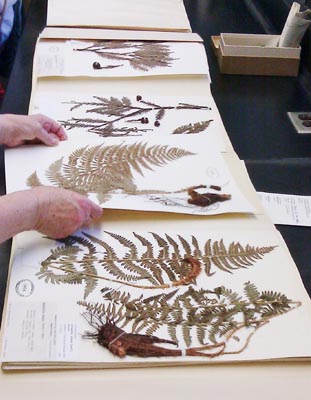 This specimen had the roots tied to the page with special linen thread, and in other places the specimen was attached to the page with special linen strips. As you can see in the photo, each herbarium sheet has a unique identifying number, called the "accession number." The sheets contain labels identifying the specimen: The lower right is the original label, showing plant name, date collected and by whom, location found, and other information. A second newer, smaller label is being added to all the specimens now, giving the plant's name in the 1993 version of the Jepson Manual.
This specimen had the roots tied to the page with special linen thread, and in other places the specimen was attached to the page with special linen strips. As you can see in the photo, each herbarium sheet has a unique identifying number, called the "accession number." The sheets contain labels identifying the specimen: The lower right is the original label, showing plant name, date collected and by whom, location found, and other information. A second newer, smaller label is being added to all the specimens now, giving the plant's name in the 1993 version of the Jepson Manual.
Other specimen sheets include a "fragment folder," which contains pieces of the plant that may be examined under a microscope  . To make the fragment more pliable so it may be placed under a microscope without breaking it, it may be rehydrated in a preservative liquid called Pohl's solution. After the botanist finishes her examination of the fragment, she returns it to the fragment folder, where it dries out again and continues to be preserved.
. To make the fragment more pliable so it may be placed under a microscope without breaking it, it may be rehydrated in a preservative liquid called Pohl's solution. After the botanist finishes her examination of the fragment, she returns it to the fragment folder, where it dries out again and continues to be preserved.
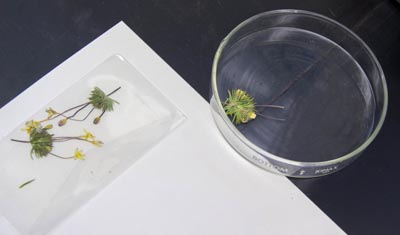
Large specimens that can't be flattened, such as pine cones, are stored in a separate box. The box contains a specimen label and the specimen sheet and box reference each other. 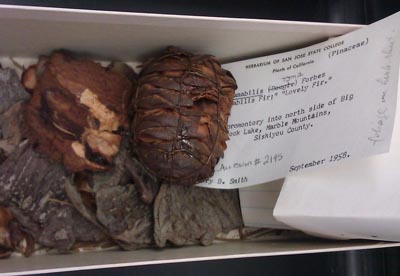 Note how the cone is sewn all around so its pieces remain in place.
Note how the cone is sewn all around so its pieces remain in place.
One use of the herbarium specimens is for molecular analysis of the plants. The DNA is still found in the plant material. Plant specimens continue to be added to the SJSU Herbarium collection. The curators give priority to plants collected in San Mateo and Santa Clara Counties that have no specimen in the herbarium, or no specimen since the early 1900's.
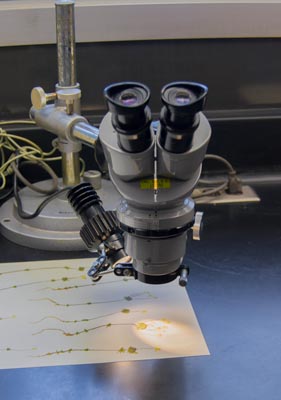
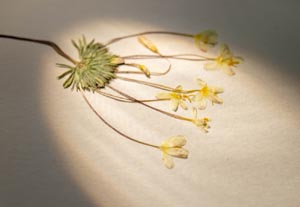
HOW TO MOUNT A SPECIMEN
After examining the specimens, the tour left the cabinet room and walked across the hall to the Botany lab for a hands-on demonstration of mounting dried plants onto specimen sheets, for storage in the herbarium. 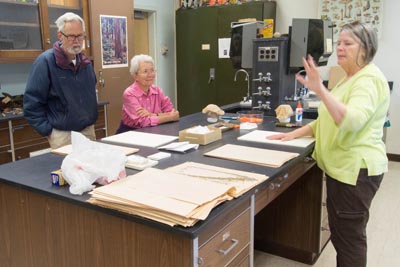
Toni Corelli demonstrated mounting a specimen first. First she laid out the plants on the table to find an arrangement that would all fit on a herbarium sheet, keeping in mind room for the labels and accession number. Next she squeezed some glue out onto the table, then added a little water and stirred it to a certain consistency. Then with a brush 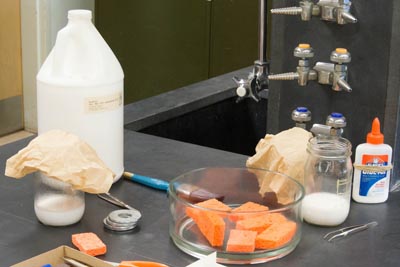 she spread out the glue out to about the size of a herbarium sheet.
she spread out the glue out to about the size of a herbarium sheet.
Toni then placed the plants on the glue and dabbed them with a sponge so every part of the underside of the plant was coated with glue. From there, she picked up the plants with tweezers and transferred them to the new herbarium sheet. She placed layer of waxed paper over the plant, and closed the brown paper folder over the entire herbarium sheet and plant. Then a piece of cardboard went on top, weighted down by bricks enclosed in paper. After a day the glue will have dried and the specimen will be ready to be labeled and stamped with its accession number.
The glue remaining on the table is ready to be spread smooth again to receive the next specimen. But before we did that we admired the "glueprint" that remained where the plant had been.  With Toni's encouragement, we all tried our hand at mounting a herbarium specimen. The Assistant Curators Teri and Lars helped us.
With Toni's encouragement, we all tried our hand at mounting a herbarium specimen. The Assistant Curators Teri and Lars helped us.

Former herbarium curator Natalie Hopkins donated a collection of dried plants specifically for the purpose of volunteers to practice mounting them as specimens.
After our mounting practice, Toni showed us how botanists can use the consortium of California Herbaria website to look up specimens from the SJSU Herbarium online, along with specimens stored at other herbaria. From the website ucjeps.berkeley.edu/consortium/ you may look up any plant in the participant herbaria by scientific name, location, county, collector etc. For each specimen found the search will show all the information found on the specimen label. See more references and websites below.
The last phase of the tour was to walk outside behind Duncan Hall to stroll through the native plant garden. It was a warm sunny day and it was a delight to be amongst the well-maintained plants.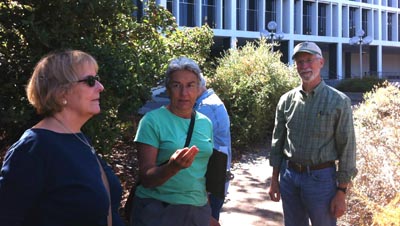
The Herbarium is looking for volunteers to help with various activities, including mounting some of their backlog of specimens. If you are interested in helping out, or would like to visit the herbarium, contact Toni Corelli at This email address is being protected from spambots. You need JavaScript enabled to view it..
REFERENCES
After the tour Toni Corelli sent these references for learning more about The Sharsmith Herbarium in particular and herbaria in general:
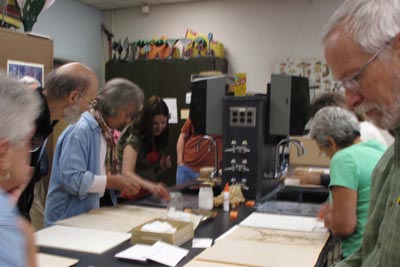
A reference book for learning more: The Herbarium Handbook by Bridson and Forman
Also just Google: "herbarium how to" to see many that will answer more of your questions.
The Jepson Interchange:
ucjeps.berkeley.edu/interchange
Consortium of California Herbaria:
ucjeps.berkeley.edu/consortium
Jepson eflora:
ucjeps.berkeley.edu/IJM_toc.html
Flickr set Sharsmith Herbarium visit September 15, 2013:
www.flickr.com/photos/tcorelli/sets/72157635551431912/with/9767486614/
Photos from September Sharsmith Herbarium visit from other participants:
http://cnps-scv.org/photos/ and click on "Herbarium"
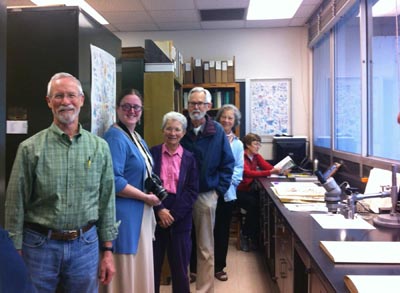
Toni's Flickr page:
www.flickr.com/photos/tcorelli
Carl W. Sharsmith Herbarium:
www.sjsu.edu/herbarium
A great book about Carl: O'Neill, Elizabeth Stone, Mountain Sage: The Life of Carl Sharsmith Yosemite Ranger/Naturalist 2nd ed. (1996)
